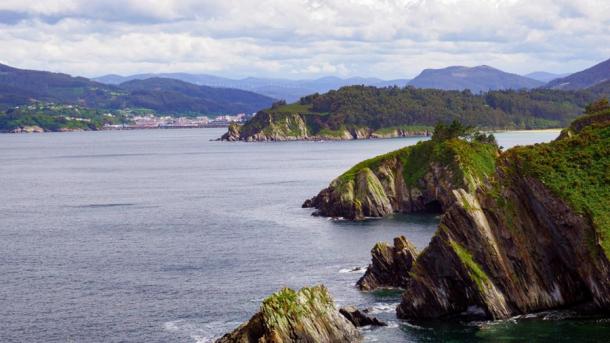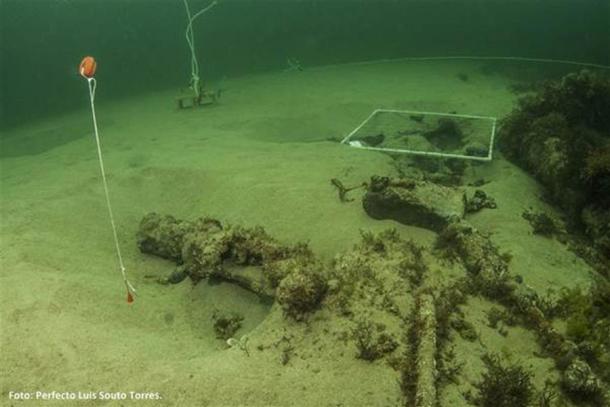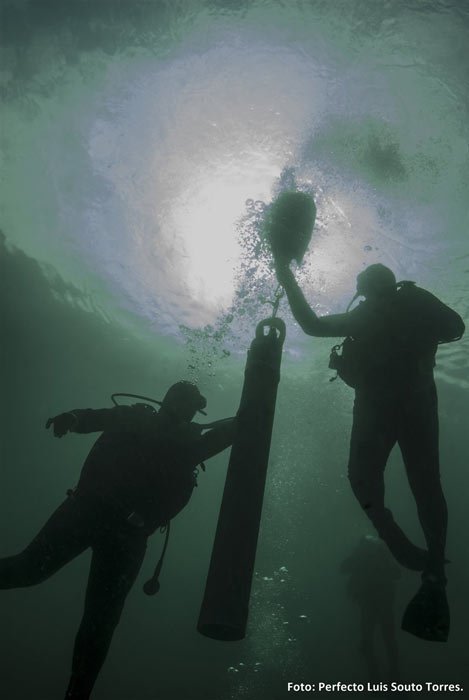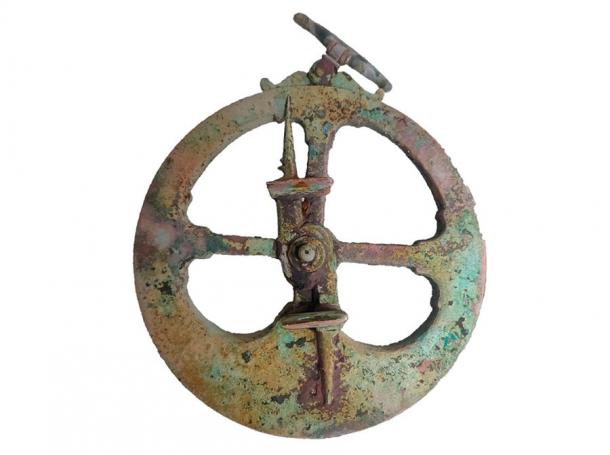In 2012, a team of divers in Spain discovered two 16th century cannons, and that was huge news. But nobody could have dreamed that an ancient astronomical compass, known as an astrolabe, would accompany this ancient pair of weapons.

The Viveiro Estuary in Galicia where the ancient astrolabe and cannons were discovered. ( Jano.Calvo / Adobe Stock)
Galician Underwater Discoveries Included an Astrolabe
Located in the southern part of the Bay of Biscay in Galicia, Spain, the Viveiro estuary is a matrix of breathtaking coves and beaches. This area is especially renowned among scuba divers and archaeologists for its fish, fauna and array of ghost ships which pepper the seabed. Tourismo Galicia say that in 2012 archaeologists confirmed more than 30 sunken ships in the estuary, mostly from a naval battle during the War of Independence.
Also in 2012, two archaeological divers discovered a pair of ship-cannons which date back to the 16th century. It has been speculated that the cannons belonged to the galleon San Bartolome , which sank in the estuary in 1597 AD. However, just last year in the same area, underwater archaeologist Anton Lopez led a team of fifteen researchers who together discovered an astrolabe, which like the cannons, has been dated to between 1575 AD and 1622 AD.

The underwater excavation site discovered in the Viveiro estuary, Spain. (Perfecto Souto / FEDAS)
Using an Astrolabe for Navigation
This is the fourth year that divers from the Northern Submerged Cultural Heritage Team, created by the Spanish Federation of Underwater Activities ( FEDAS), have searched for lost archaeology in the Viveira estuary. The astrolabe represents the very first astronomical instrument of its kind ever found in Galicia. Furthermore, it is only the 108th of its type that has ever been discovered, anywhere in the world.
Astrolabes have been found dating back to the 6th century. The term astrolabe has been used loosely to describe all early scientific instruments that were used for calculating time and location. For several centuries astrolabes were used by navigators to orient themselves at sea, and for calculating courses to meet their desired destination. The devices were aligned with both the horizon and the meridian, and this allowed astronomers to calculate the positions of the Sun, moon and and highest magnitude stars.

Archaeologists bringing one of the cannons to the surface. ( FEDAS)
It’s in the Top 10 All Time Best Ancient Astrolabe Charts
The solid bronze astrolabe that was discovered in the Viveiro estuary weighs 4.92 kilos (10.84 lb) and measures 21 centimeters (8.27 in) in circumference. According to a report on Archaeology News Network , discoverer Anton Lopez said the find is “very important” because it represents “high technology in marine navigation.” Enhancing the artifact’s rarity is the fact that it was handcrafted and that it was built to order. The marine archaeologist has declared the astrolabe as being amongst “the ten best-preserved on the planet.”

Solid Bronze, 16th century astrolabe recovered from Bay of Biscay, Spain . ( FEDAS)
Lopez says the device is unique because none of the other 107 known astrolabes in the world combine “the three-lobed ring with the harpoon-shaped alidade.” The “three-lobed ring” forms the base of the device and it is named as such because it is shaped like three fingers, enabling users a more secure grip on a moving ship. The “alidade” refers to the bronze rod that rotated around circular base, that was aligned with celestial objects to establish orientation and course at sea.
Now, Let’s Find the Mothership!
The astronomical compass was discovered at archaeological site Viveiro I site, which is the the islet to the east of Area beach, where the two 16th century cannons were found in 2012. While no wooden remains have been discovered relating to the ship that carried the cannons, the researchers think the astrolabe could also have come from the same vessel, which was either a 16th century cargo, or warship.
The astrolabe is currently being restored and it will be temporarily held in the Museo do Mar in Vigo as an important element of Galicia’s archaeological heritage. The two cannons remain in situ and Lopez is convinced that they will soon lead to the discovery of the astrolabe’s mothership.
Top image: The 16th century astrolabe recovered from Bay of Biscay in Galicia, Spain . Source: La Voz de Galicia
By Ashley Cowie
 RSS Feed
RSS Feed















 November 13th, 2021
November 13th, 2021  Awake Goy
Awake Goy  Posted in
Posted in  Tags:
Tags: 













